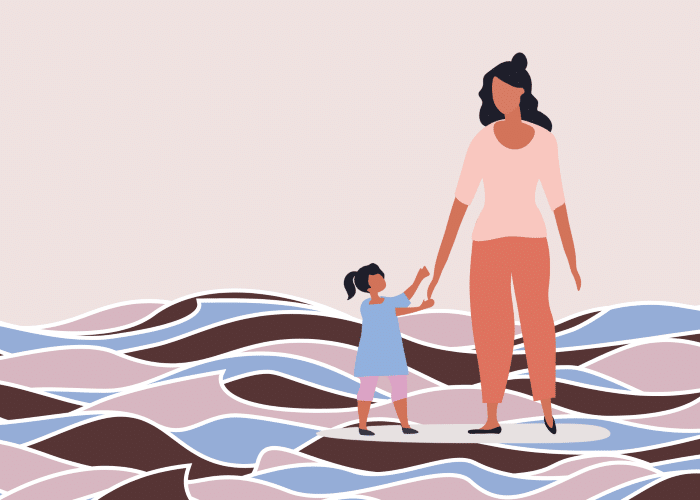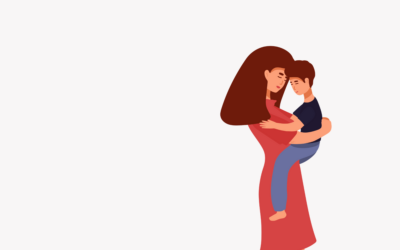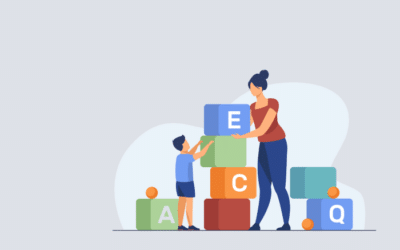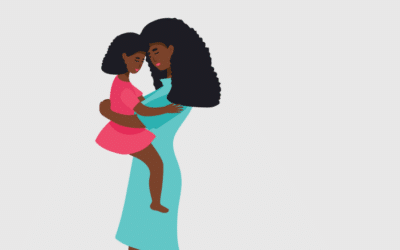Have you ever witnessed the storm—the choppy waters of a child’s big emotions? Of course! Like us, our little ones are human—experiencing the full spectrum of emotions. But unlike us, their brains are still developing the skills to navigate and cope.
In moments when kids are experiencing immense, turbulent feelings, they look to us for safety. To be the calm gently guiding them through their storm—the anchor in their waves.
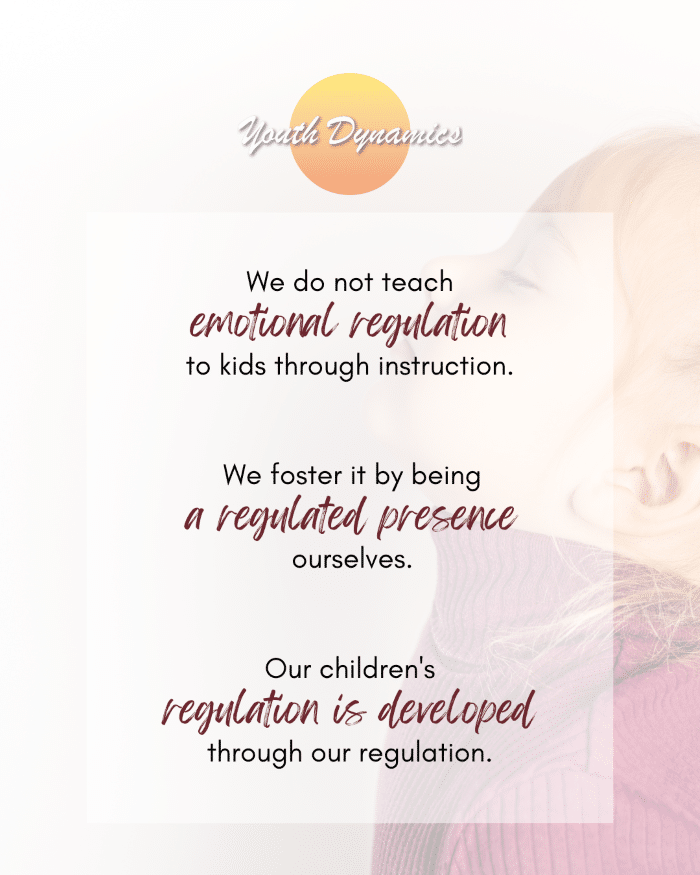
Children learn emotional regulation through our regulated presence. Simply put, we learn to self-soothe through thousands of instances of being soothed by someone else.
Below are seventeen quotes on emotional regulation—on being the calm in our kids’ storm.
Quotes on Being the Calm in Our Kids’ Storm
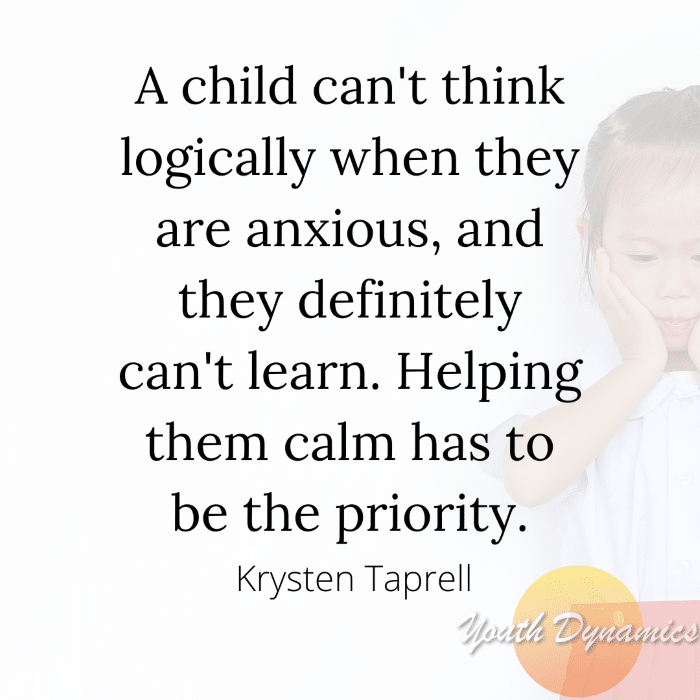
Quote 1: A child can’t think logically when they are anxious, and they definitely can’t learn. Helping them calm has to be the priority. – Inspired by Krysten Taprell, @the_therapist_parent
When kids become flooded with emotion, logical thinking takes a backseat. Our primary focus must be to soothe—sharing our calm.
Hold space and validate feelings. Then, once strong emotions such as anxiety have subsided, we can effectively teach.
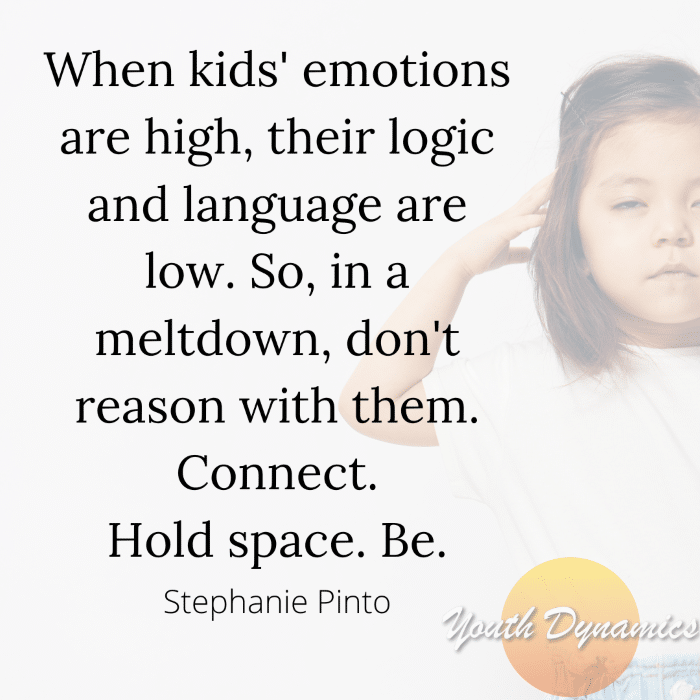
Quote 2: When kids’ emotions are high, their logic and language are low. So, in a meltdown, don’t reason with them. Connect. Hold space. Be. – Stephanie Pinto
When children are experiencing big emotions, it’s not the time for reasoning or a lecture. Attend to their feelings first. Then, after they have calmed, you can effectively coach them.
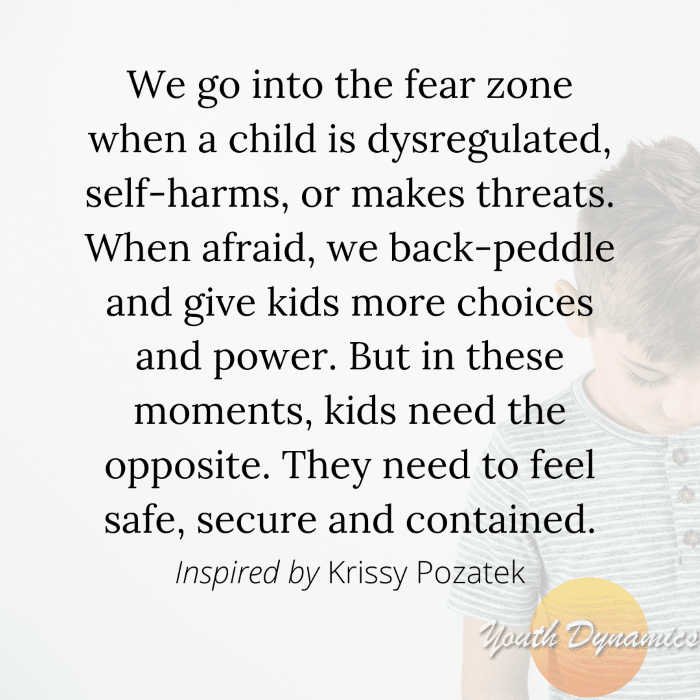
Quote 3: We go into the fear zone when a child is dysregulated, self-harms, or makes threats. When afraid, we back-peddle and give kids more choices and power. But in these moments, kids need the opposite. They need to feel safe, secure, and contained. – Inspired by Krissy Pozatek
When dysregulated, kids need safety, security, and boundaries that provide comfort. Be their safe haven—the anchor in their storm.
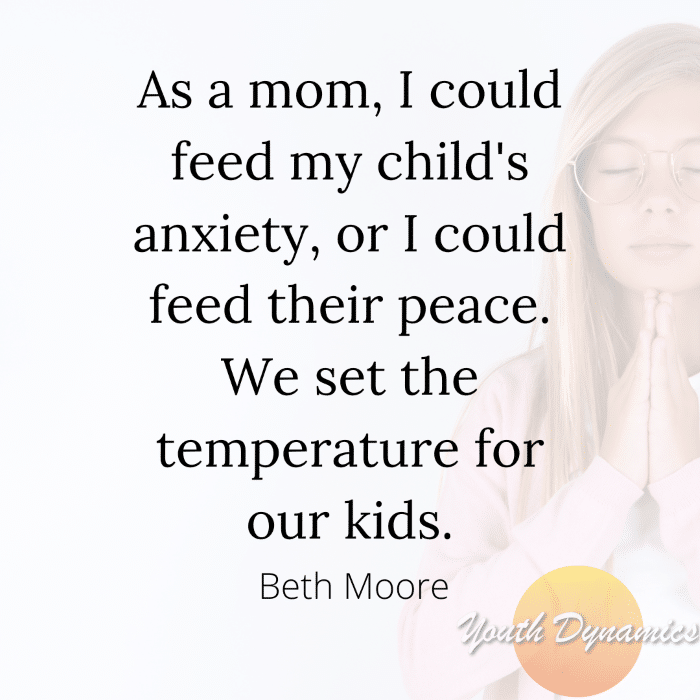
Quote 4: As a mom, I could feed my child’s anxiety, or I could feed their peace. We set the temperature for our kids. – Beth Moore
We hold the power to shape our children’s emotional well-being. Remember—we set the tone. Feed their peace.
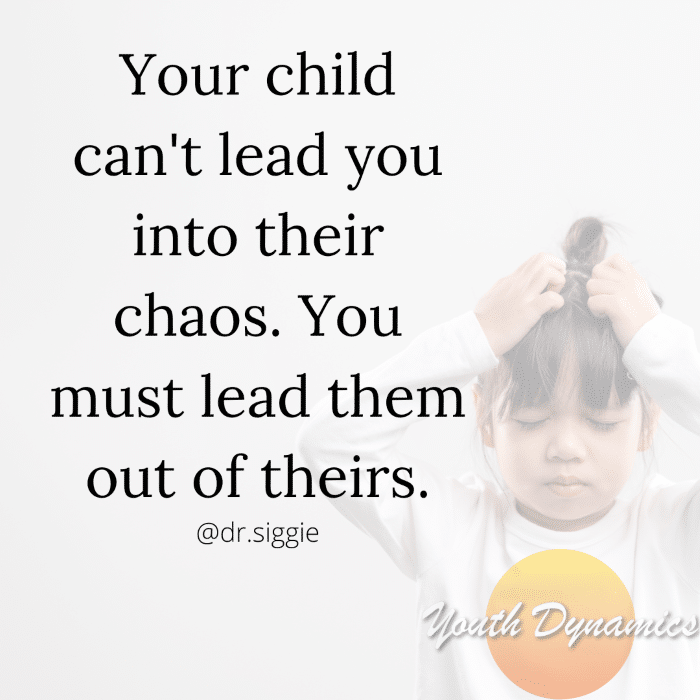
Quote 5: Your child can’t lead you into their chaos. You must lead them out of theirs. – @dr.siggie
Our children need us to be a calm, steady force—especially during times when they are experiencing turbulent emotions.
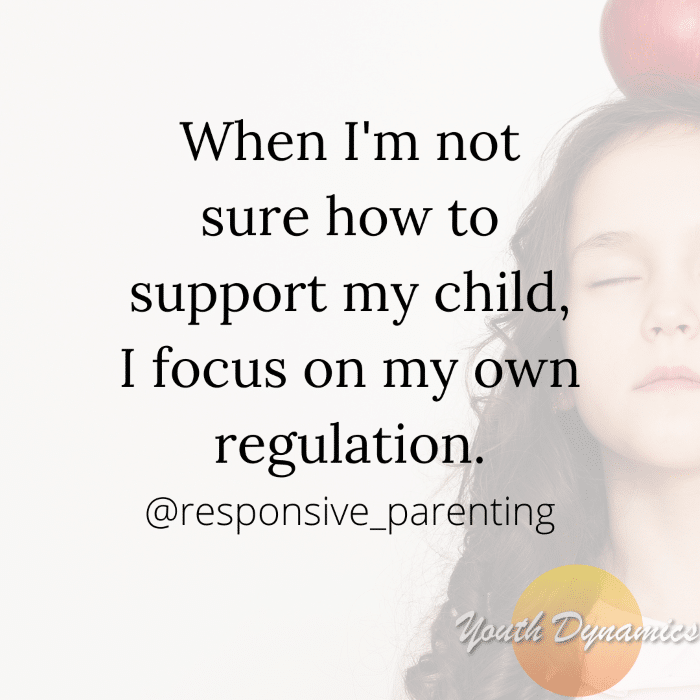
Quote 6: When I’m not sure how to support my child, I focus on my own regulation. – @responsive_parenting
When you don’t know how to best support your kids, try turning inward.
By noticing, understanding, and regulating our emotions, we can better provide the calm and stability our children need—approaching parenting with a more centered, grounded perspective.
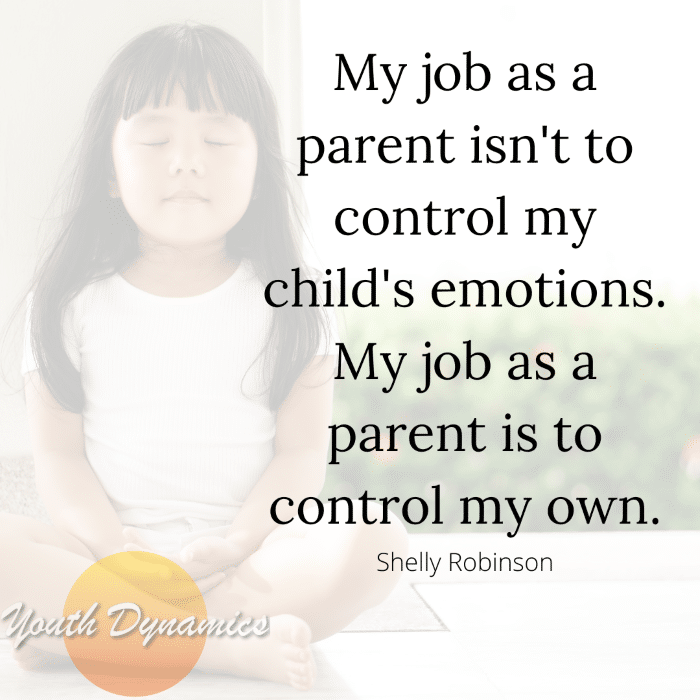
Quote 7: My job as a parent isn’t to control my child’s emotions. My job as a parent is to control my own. – Shelly Robinson
We can’t control our children’s feelings, but we can teach them how to navigate them by how we navigate our own. And in doing so, we can better provide a safe, supportive environment for them to grow.
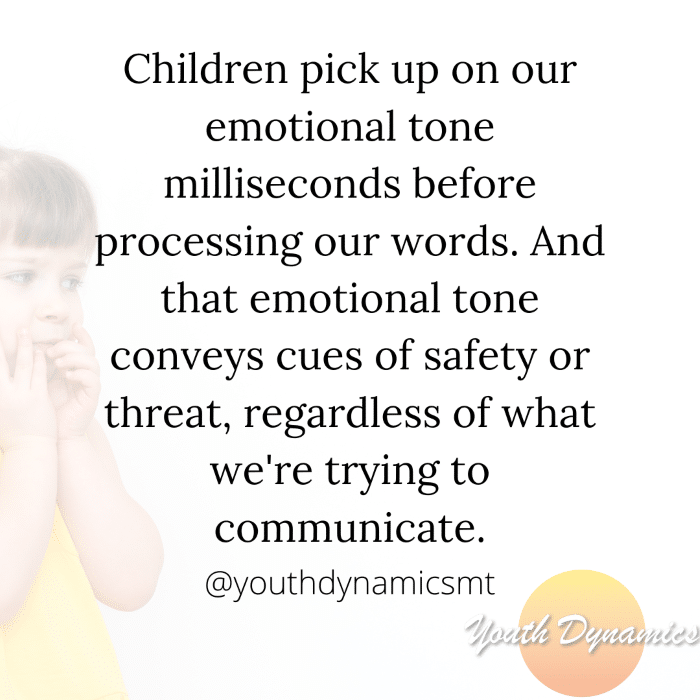
Quote 8: Children pick up on our emotional tone milliseconds before processing our words. And that emotional tone conveys cues of safety or threat, regardless of what we’re trying to communicate. – @youthdynamicsmt
Our kids are always listening, not just to our words but to the emotions behind them. Create a safe, nurturing environment—one where children feel loved and protected.
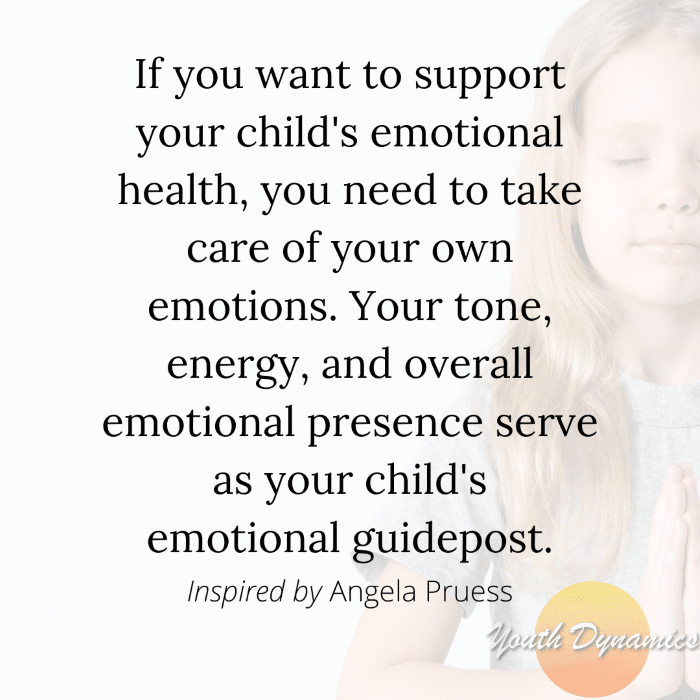
Quote 9: If you want to support your child’s emotional health, you need to take care of your own emotions. Your tone, energy, and overall emotional presence serve as your child’s emotional guidepost. – Inspired by Angela Pruess
Our wellness shapes our children’s wellness. Caring for ourselves is an act of love—for both us and our little ones.
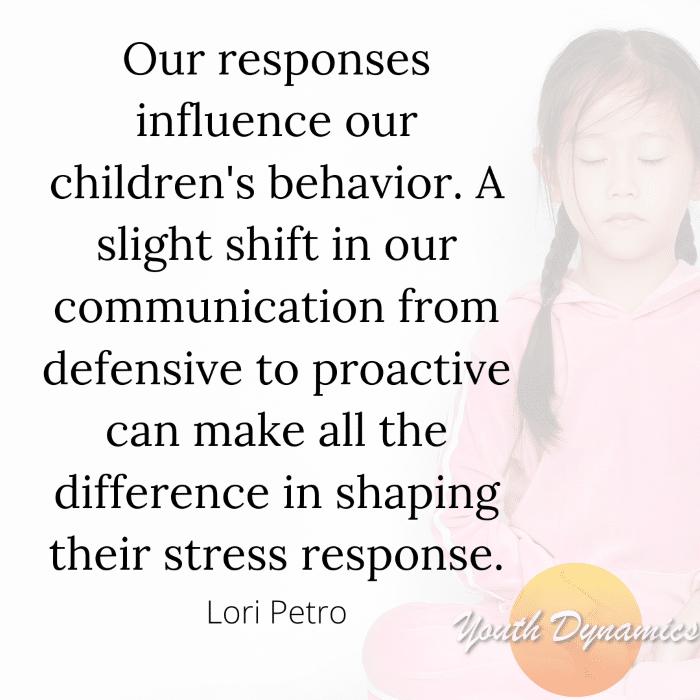
Quote 10: Our responses influence our children’s behavior. A slight shift in our communication from defensive to proactive can make all the difference in shaping their stress response. – Lori Petro
Parenting isn’t just about our kid’s behavior; it’s also about our own. The energy we put out can either fuel their fire or calm their storm. Emotions feed off emotions.
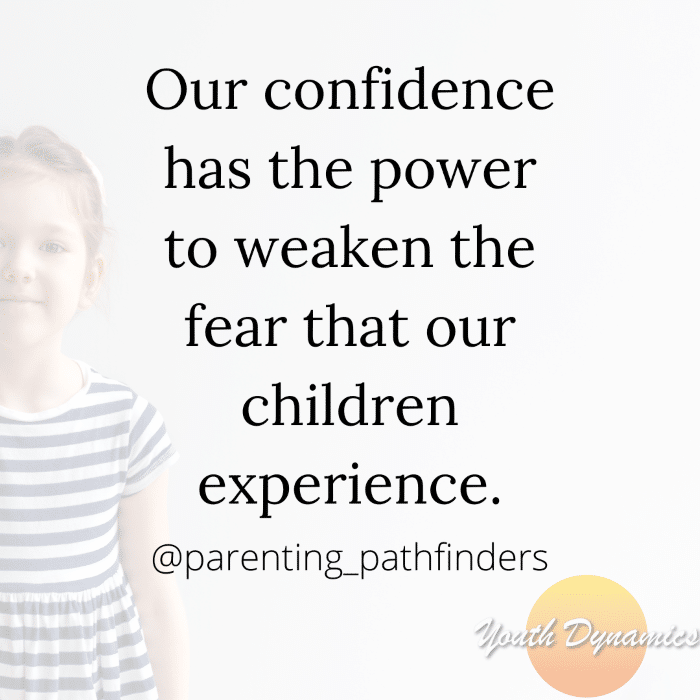
Quote 11: Our confidence has the power to weaken the fear that our children experience. – @parenting_pathfinders
Our confidence is a mighty force—weakening the grip of fear our kid’s experience. When we embody self-assurance, we impart a sense of safety and security.
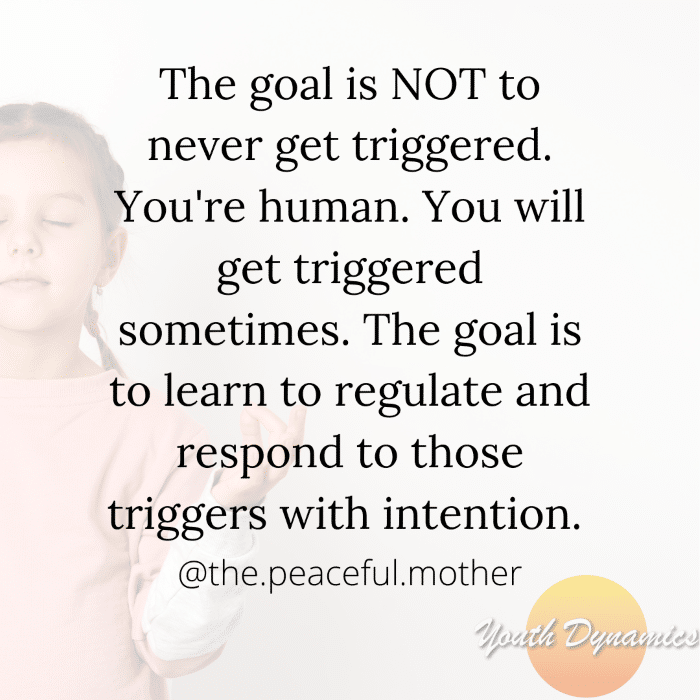
Quote 12: The goal is NOT to never get triggered. You’re human. You will get triggered sometimes. The goal is to learn to regulate and respond to those triggers with intention. – @the.peaceful.mother
A trigger is anything that sets you off emotionally and activates memories of trauma. It’s particular to you and what your experiences have been.
Triggers may include feeling:
- Powerless
- Judged
- Unheard
- Unsafe
- Disrespected
- Unloved
- Controlled
Our ability to navigate triggers and the emotions springing from them is tied to our ability to understand feelings, where they come from, and tolerate the sensations that arise when we experience them.
When we create space for ourselves to do this, we’re better able to create space for our kids.
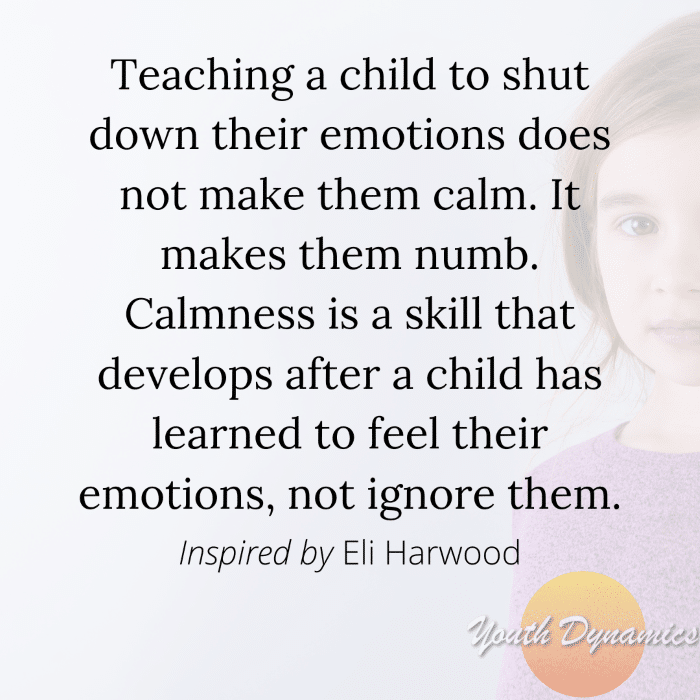
Quote 13: Teaching a child to shut down their emotions does not make them calm. It makes them numb. Calmness is a skill that develops after a child has learned to feel their emotions, not ignore them. – Inspired by Eli Harwood
Calmness is not achieved by shutting down our feelings but by learning to navigate and regulate the storm within.
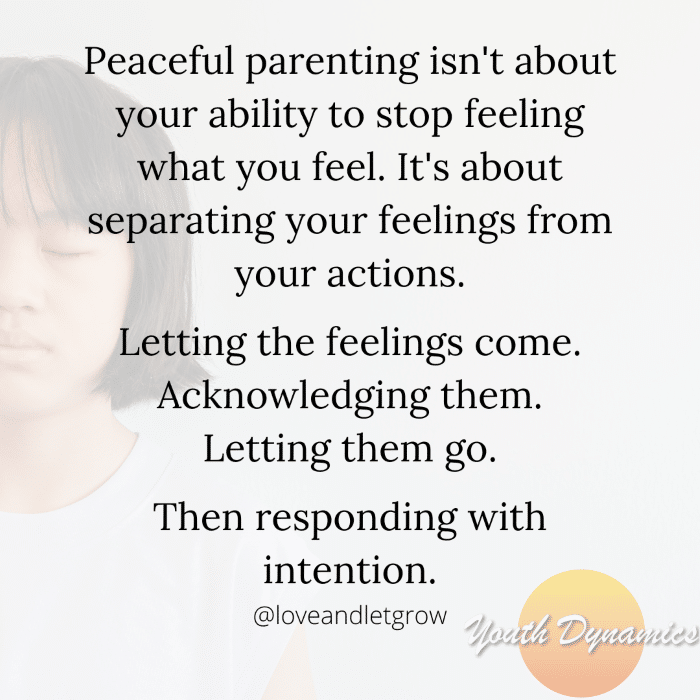
Quote 14: Peaceful parenting isn’t about your ability to stop feeling what you feel. It’s about separating your feelings from your actions. Letting the feelings come. Acknowledging them. Letting them go. Then, responding with intention. – @loveandletgrow
Feel the feeling but don’t become the emotion.
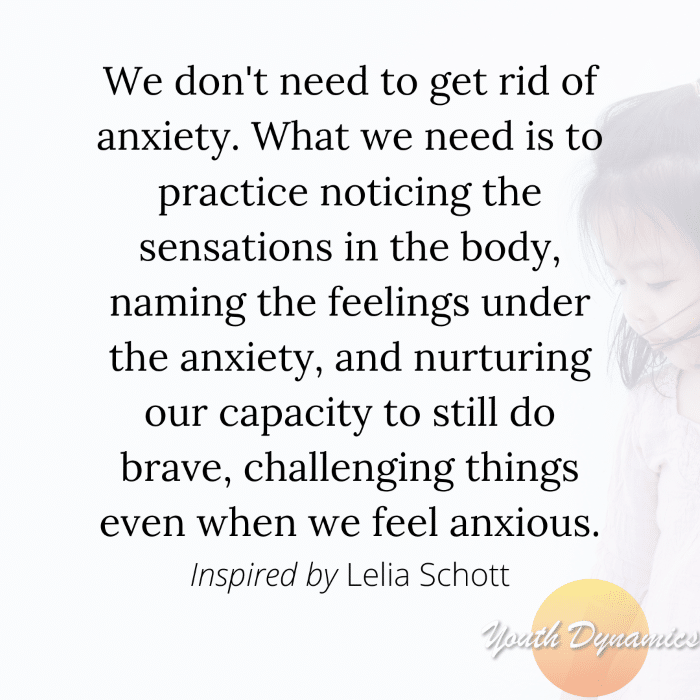
Quote 15: We don’t need to get rid of anxiety. What we need is to practice noticing the sensations in the body, naming the feelings under the anxiety, and nurturing our capacity to still do brave, challenging things even when we feel anxious. – Inspired by Lelia Scott
Instead of trying to rid ourselves of big feelings like anxiety, let’s shift our focus toward developing the skills to navigate them gracefully.
One skill for navigating emotions, particularly anxiousness, is mindfulness—becoming aware of the sensations in our body. By tuning in, we can identify the feelings beneath the surface—acknowledging and naming them without judgment.
Foster self-compassion, and remember, it’s not about eradicating our emotions but developing skills to coexist with them.
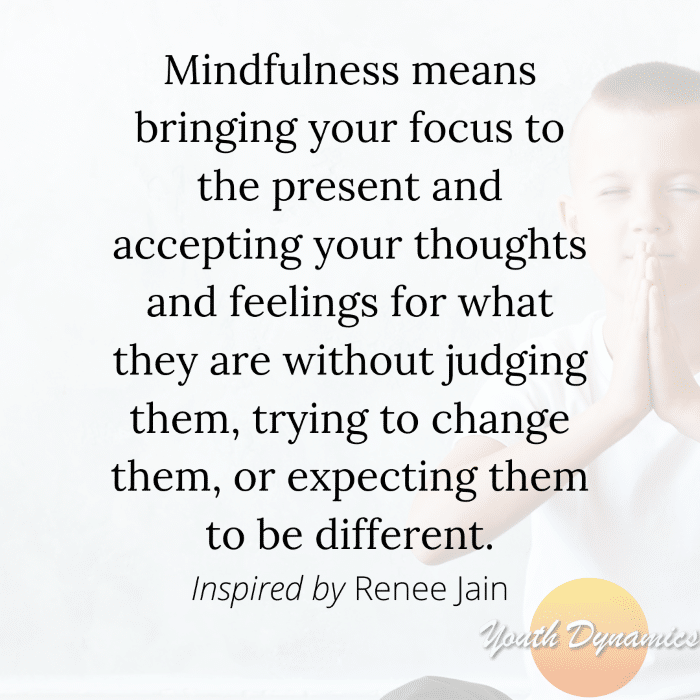
Quote 16: Mindfulness means bringing your focus to the present and accepting your thoughts and feelings for what they are without judging them, trying to change them, or expecting them to be different. – Inspired by Renee Jain
To be mindful is to bring your focus to the present moment—accepting your thoughts and feelings for what they are without judgment or trying to change them.
In a world that often pulls us in different directions, mindfulness offers a sanctuary of peace and acceptance, inviting us to notice the beauty in the simplest moments and cultivate deeper self-awareness.
By taking a moment to:
🧘♀️ Pause
🧘♀️ Breathe
🧘♀️ Embrace the present
We can better anchor ourselves during waves of emotion, support our kids during their storms, and live with clarity, authenticity, and gratitude.
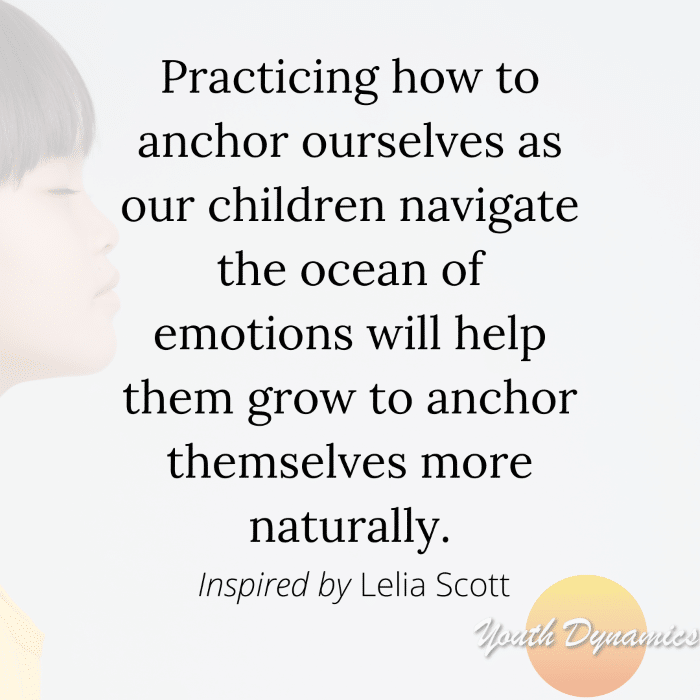
Quote 17: Practicing how to anchor ourselves as our children navigate the ocean of emotions will help them grow to anchor themselves more naturally. – Inspired by Lelia Scott
When we practice grounding ourselves alongside our children’s turbulent emotions, we teach them the art of anchoring themselves. Through our self-awareness and regulation, we create safety—modeling inner stability and guiding toward emotional resilience.
Want More?
Check out the rest of our blog and follow us on social media. You can find us on LinkedIn at Youth Dynamics of Montana, Instagram @youthdynamicsmt, and Facebook at Youth Dynamics of Montana & People of Youth Dynamics.

